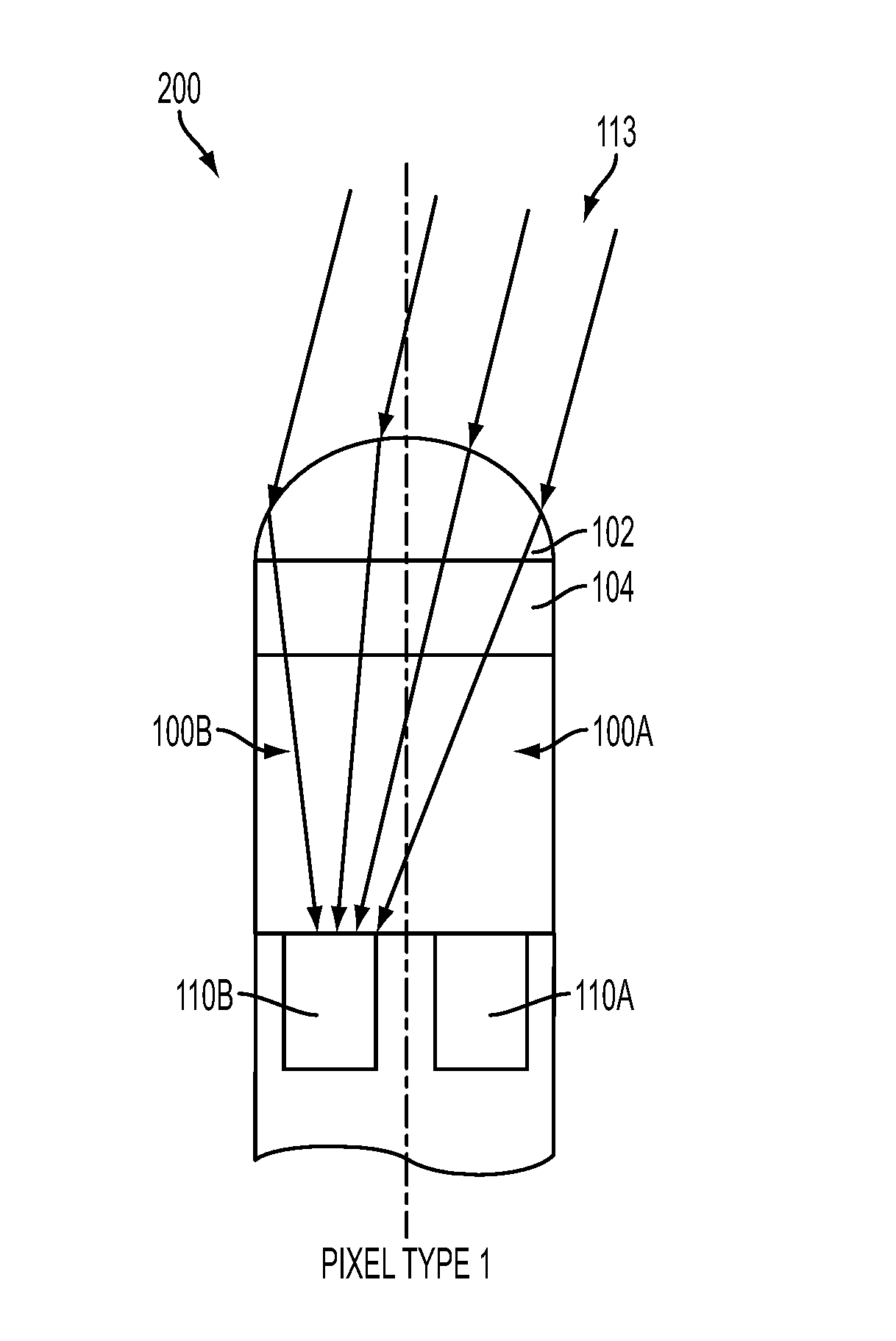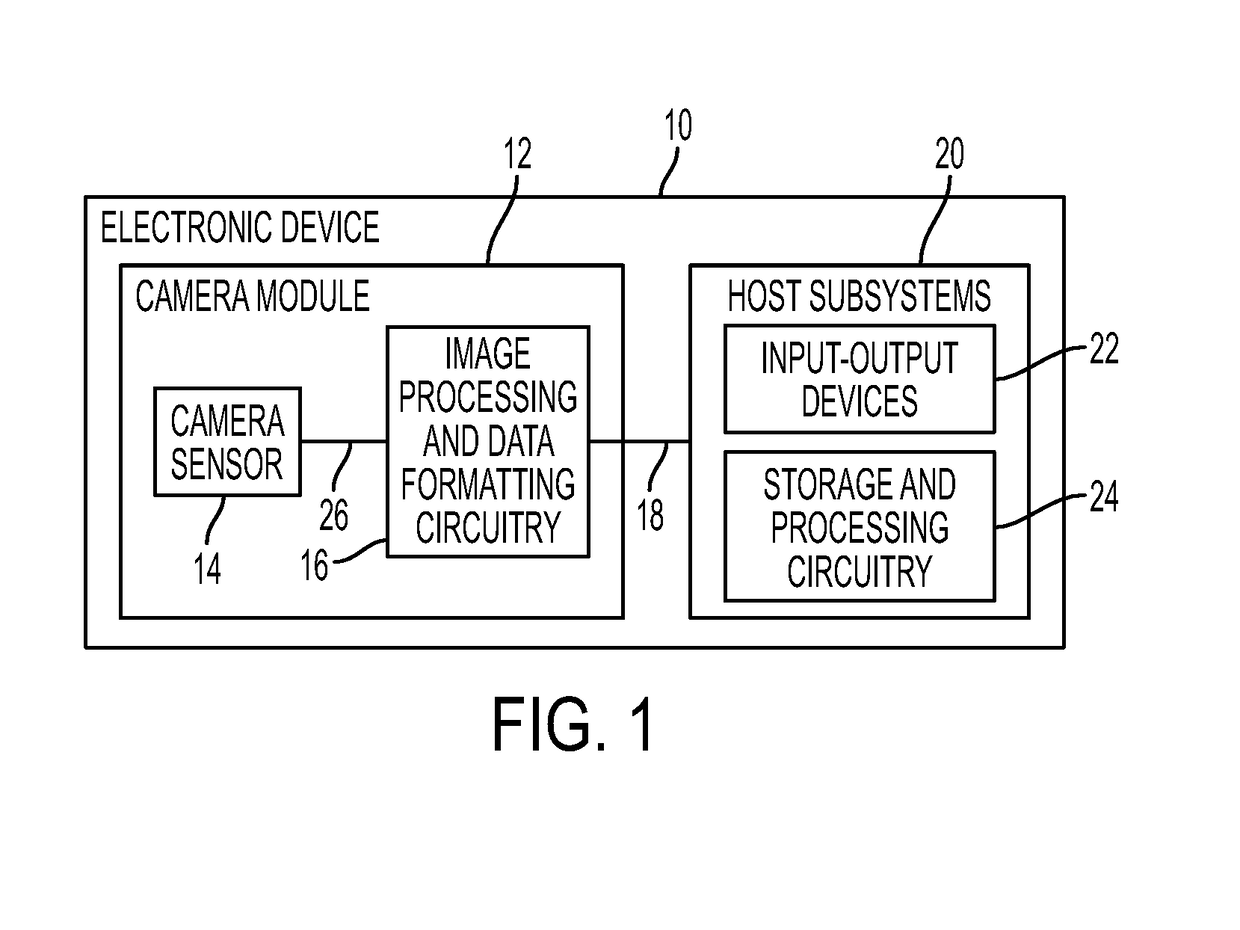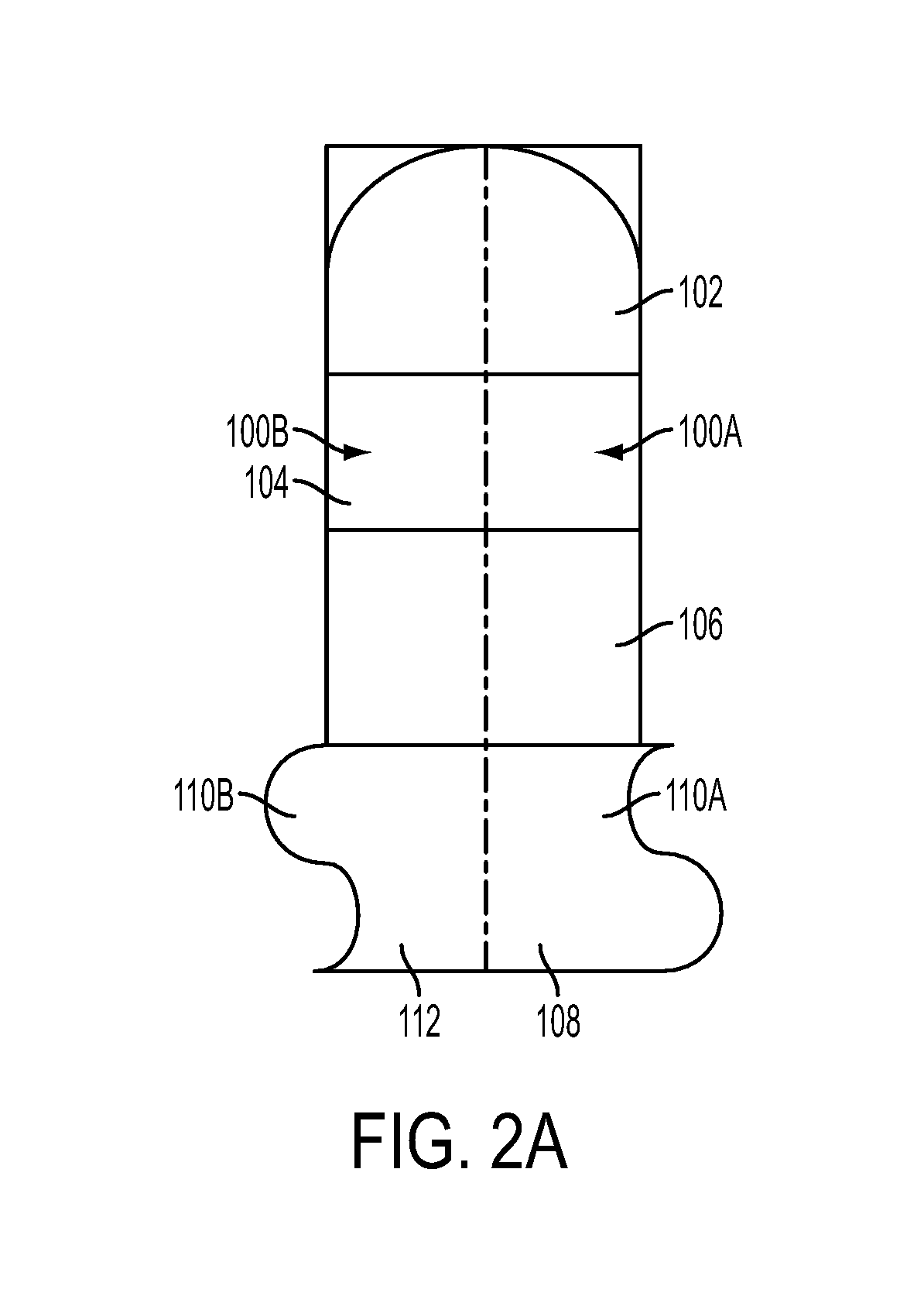Asymmetric angular response pixels for single sensor stereo
a single sensor, angular response technology, applied in the field of imaging systems, can solve the problems of increasing cost and complexity in obtaining good stereo imaging performance, reducing spatial resolution, and increasing cost and complexity
- Summary
- Abstract
- Description
- Claims
- Application Information
AI Technical Summary
Benefits of technology
Problems solved by technology
Method used
Image
Examples
Embodiment Construction
[0024]An electronic device with a digital camera module is shown in FIG. 1. Electronic device 10 may be a digital camera, a computer, a cellular telephone, a medical device, or other electronic device. Camera module 12 may include image sensor 14 and one or more lenses. During operation, the lenses focus light onto image sensor 14. Image sensor 14 includes photosensitive elements (i.e., pixels) that convert the light into digital data. Image sensors may have any number of pixels (e.g., hundreds, thousands, millions, or more). As examples, image sensor 14 may include bias circuitry (e.g., source follower load circuits), sample and hold circuitry, correlated double sampling (CDS) circuitry, amplifier circuitry, analog-to-digital converter (ADC) circuitry, data output circuitry, memory (e.g., buffer circuitry), address circuitry, etc.
[0025]Still and video image data from camera sensor 14 may be provided to image processing and data formatting circuitry 16 via path 26. Image processing ...
PUM
 Login to View More
Login to View More Abstract
Description
Claims
Application Information
 Login to View More
Login to View More - R&D
- Intellectual Property
- Life Sciences
- Materials
- Tech Scout
- Unparalleled Data Quality
- Higher Quality Content
- 60% Fewer Hallucinations
Browse by: Latest US Patents, China's latest patents, Technical Efficacy Thesaurus, Application Domain, Technology Topic, Popular Technical Reports.
© 2025 PatSnap. All rights reserved.Legal|Privacy policy|Modern Slavery Act Transparency Statement|Sitemap|About US| Contact US: help@patsnap.com



